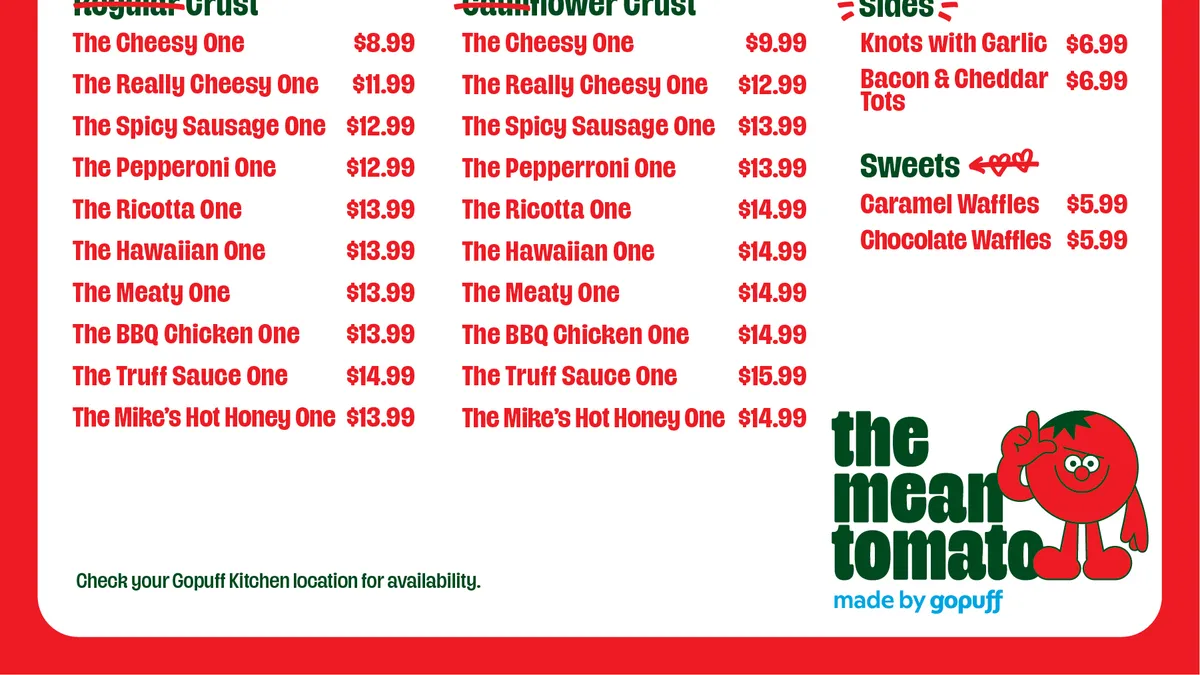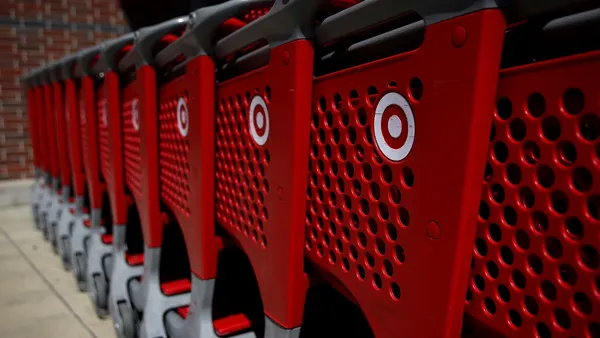Dive Brief:
- Gopuff has launched its first online restaurant brand under its recently launched Kitchen division, the company announced Wednesday.
- The Mean Tomato serves up New York City-style pizzas, sides and desserts that customers can add to their orders of snacks, household goods and other items. Workers can prepare each pizza in around three minutes.
- Gopuff Kitchen operates in more than 70 delivery zones, a company spokesperson said, with plans for “continued geographic and menu expansion later this year.”
Dive Insight:
Gopuff’s launch of its online pizza restaurant highlights the value the company is placing on establishing its own product and foodservice brands as it expands.
The Mean Tomato, which features a colorful cartoon mascot, includes a menu that the company says was tailored to Gopuff customers using key insights and data. Selections include traditional cheese and pepperoni pizzas, as well as specialty selections like a ricotta pizza and one made using Mike’s Hot Honey. There are also sides like garlic knots, along with sweet selections like chocolate waffles.
Gopuff Kitchen operates from mobile facilities positioned adjacent to the company’s micro-fulfillment centers, allowing the company to combine meals and products into a single order.
Since launching last summer, those facilities have offered a variety of dishes across day parts, including pizza, iced coffee, breakfast sandwiches, chicken tenders and salads for rapid delivery. But forging a new restaurant brand indicates a push to elevate its meal options and potentially offer a stable of virtual brands similar to other ghost kitchen operations.
In March, Gopuff named Pizza Hut veteran Amelia Riba as vice president of the Kitchen division. Riba, who has worked for restaurant brands internationally, worked alongside Alan Morgan, Gopuff’s director of culinary and a former culinary director at Whole Foods, to develop The Mean Tomato’s menu.
Offering freshly prepared foods has helped Gopuff increase basket sizes since it launched Kitchens last summer, the company said. In an interview late last year, Daniel Folkman, the company’s SVP of business, said 90% of Gopuff Kitchen orders include at least one non-Kitchen item in them.
However, Gopuff is facing some high-level challenges that could overshadow its foodservice efforts. It’s having a harder time raising funds as investors turn away from e-commerce companies and toward more reliable sources of income that don’t burn through as much money, The Information reported this week. In early April, Gopuff laid off 3% of its global workforce of around 15,000 people.
In January, Gopuff launched its first private label line, Basically, which includes groceries like snacks and bottled water along with household items like batteries and paper products.














